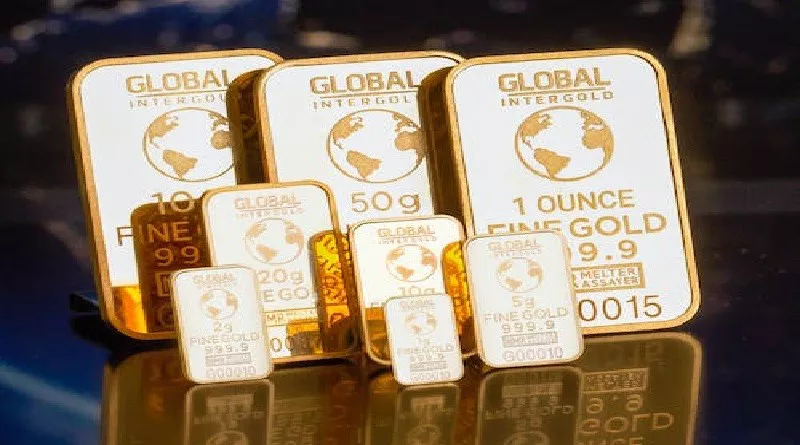Riding the Golden Wave: Analyzing the Sustainability of Short-Term Gains Amidst Low Volatility
In the realm of investment, few assets have captivated human fascination as much as gold. With a history spanning millennia, this precious metal has retained its allure due to its intrinsic value, serving as a hedge against economic uncertainties. In recent times, the market has witnessed a surge in gold prices, accompanied by an unusual phenomenon – low volatility. This combination raises intriguing questions about the sustainability of gold’s short-term gains in the face of such stable market conditions.
The Glittering Rise: Short-Term Surges in Gold Prices
Gold has long been viewed as a safe haven, a store of value during times of economic turmoil. As global uncertainties have intensified, investors have turned to this precious metal as a way to protect their wealth. In the short term, gold prices have experienced a noticeable uptick, partly driven by its reputation as a reliable asset in uncertain times.
Unraveling the Low Volatility Paradox
One of the puzzling aspects of the current market landscape is the juxtaposition of gold’s price surge with low volatility. Traditionally, gold’s price movement has been associated with heightened market volatility. However, the recent period has seen an intriguing departure from this norm, with gold prices witnessing substantial gains despite an environment of relative market stability.
Factors Fueling the Gold Rush in Low Volatility
Several factors can be attributed to the ongoing gold rush amidst low volatility. Firstly, the persistence of low interest rates has diminished the opportunity cost of holding non-yielding assets like gold. This has increased its attractiveness, especially when compared to bonds and other fixed-income securities.
Secondly, geopolitical uncertainties, while not causing immediate market turbulence, have created an undercurrent of apprehension. The potential for sudden developments on the global stage continues to drive investors towards the safe haven offered by gold.
The Tug of War: Can Gold’s Momentum Endure?
While the short-term gains in gold prices amid low volatility are noteworthy, the sustainability of this trend requires a closer examination. Gold’s price trajectory can be influenced by a multitude of factors, including shifts in market sentiment, changes in economic indicators, and unexpected geopolitical events. As the market evolves, it’s essential to consider both sides of the equation.
Factors Challenging Sustained Growth
Despite the current positive momentum, there are factors that could challenge gold’s sustained growth in the face of low volatility. One significant consideration is the potential for a rapid shift in market sentiment. If investors suddenly regain confidence in other asset classes, the appeal of gold as a safe haven could diminish, leading to a reversal in its price trajectory.
Moreover, the gradual tightening of monetary policies by central banks could impact the landscape. As interest rates rise, the opportunity cost of holding gold might increase, potentially leading investors to reevaluate their positions.
FAQs: Navigating the Dynamics of Gold’s Short-Term Gains and Low Volatility
Q1: Can gold’s price continue to rise indefinitely amidst low volatility?
A1: While gold has shown impressive gains in the short term within a low volatility environment, its future trajectory is uncertain. Factors such as shifting market sentiment, economic indicators, and geopolitical events can all influence its price. It’s important to monitor these factors closely and make informed investment decisions.
Q2: How does low volatility impact the relationship between gold and other assets?
A2: Low volatility can alter the traditional relationship between gold and other assets. In a stable market, investors might be less inclined to flock to gold as a safe haven, impacting its demand. However, gold’s intrinsic value and historical significance can still provide support during times of uncertainty.
Q3: What role do central banks play in the volatility of gold prices?
A3: Central banks hold significant influence over gold prices through their monetary policies. Changes in interest rates, quantitative easing measures, and economic outlooks communicated by central banks can all impact investor sentiment towards gold. Monitoring these policies is crucial for understanding potential future price movements.
In Conclusion: Balancing on the Golden Scale
The recent surge in gold prices amidst low volatility is a compelling phenomenon that captures the attention of both seasoned investors and newcomers to the financial arena. While the current environment seems conducive to gold’s growth, it’s vital to approach its prospects with a cautious optimism. The intricate dance between market sentiment, economic conditions, and geopolitical dynamics will determine whether gold can maintain its glittering trajectory or face the challenges posed by an evolving investment landscape. As always, staying informed and being adaptable will be key to making prudent investment decisions in these intriguing times.

